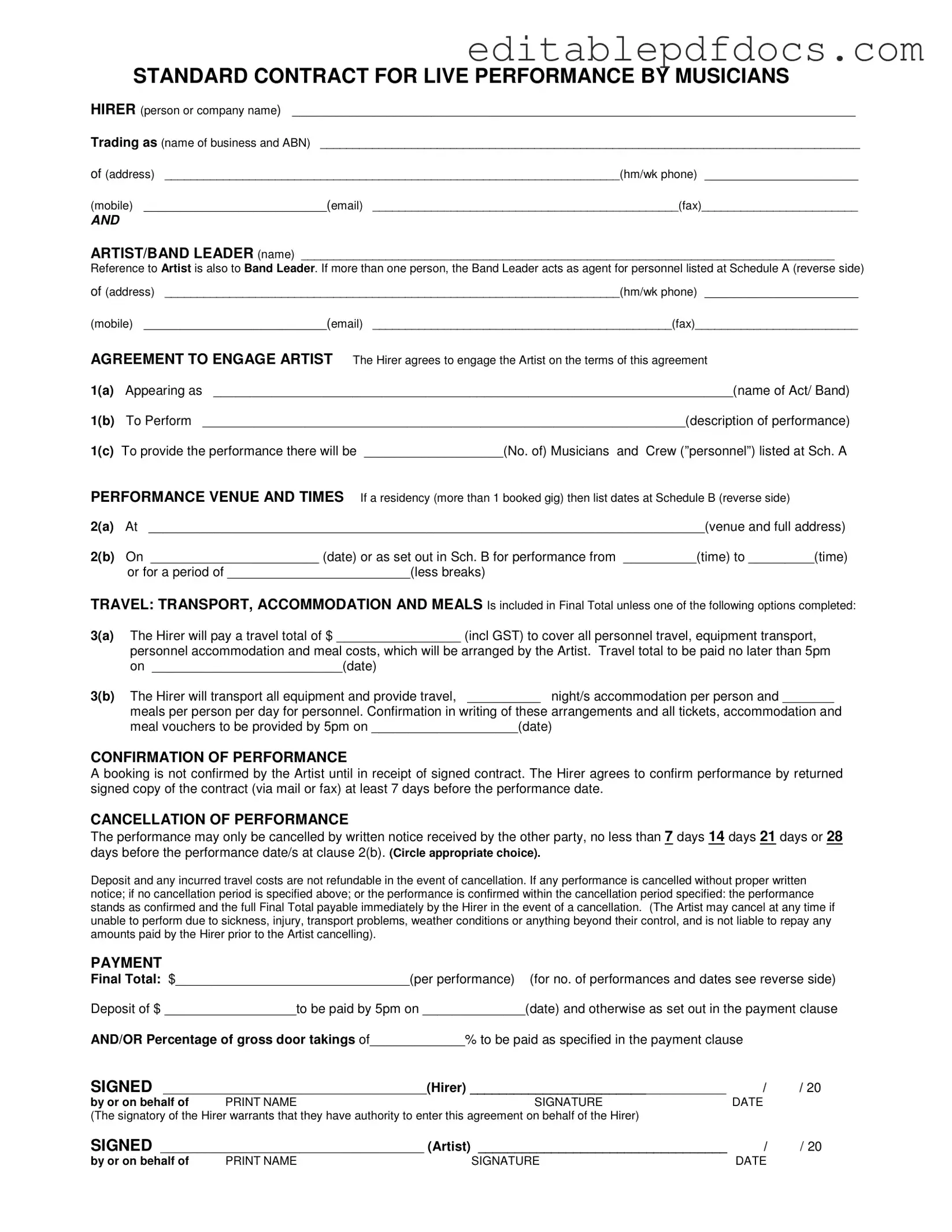Filling out the Live Performance Contract form accurately is crucial for both the Hirer and the Artist. One common mistake is failing to provide complete contact information. This includes the Hirer’s full name, business name, address, and contact details. Omitting any of this information can lead to confusion and hinder communication.
Another frequent error involves neglecting to specify the performance details. The Hirer should clearly indicate the name of the act or band, as well as a thorough description of the performance. Incomplete or vague descriptions can create misunderstandings regarding the expectations for the event.
Many Hirers overlook the importance of confirming travel arrangements. If the Hirer chooses to cover travel, accommodation, and meal costs, they must clearly fill in the corresponding sections. Failure to do so can lead to disputes over who is responsible for these expenses, which may arise unexpectedly.
Additionally, the cancellation policy is often misunderstood. The Hirer must circle the appropriate cancellation period and ensure that they understand the implications of not providing written notice within that timeframe. Not doing so may result in financial penalties or loss of deposit.
Payment terms are another area where mistakes frequently occur. The Hirer should clearly state the final total, deposit amount, and payment due dates. If these details are not filled out correctly, it can lead to payment delays and disputes after the performance.
Another mistake involves not signing the contract properly. Both the Hirer and the Artist must sign and date the contract. Missing signatures or incorrect dates can render the contract invalid, complicating the engagement further.
Finally, not including special conditions can lead to misunderstandings. If there are specific requirements or requests, such as catering needs or technical specifications, they should be documented clearly in the designated section. This oversight can result in unmet expectations during the performance.
